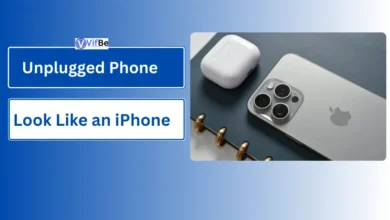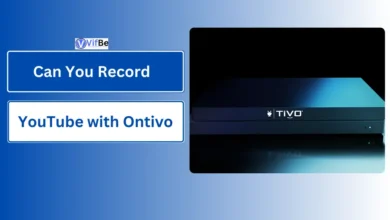Why Is My Tesla Routing with No Traffic Data? A Guide to Fixing Navigation Problems

Even those who own a Tesla might have a time when the car’s navigation system routing without using live traffic information. This can result to distorted routing and failed traffic congestion notice thus making your driving difficult.
In this article, you will learn about some common errors such as Why Is My Tesla Routing with No Traffic Data, how to get rid of them, and how to apply effective settings for Tesla navigation to receive accurate routes and traffic information.
This paper aims to provide an understanding of traffic data system by evaluating Tesla technology solutions.
To know where exactly to focus one’s troubleshooting efforts it is important to figure out how traffic data for routing is accumulated and utilized by Tesla. Traffic information is another area where Tesla has multiple sources, which include information from Tesla cars on the road in real-time.
These data are useful in forming a correct representation of the current traffic situation and, therefore, the appropriate routing. But in some cases, this system might not update is correctly and thisズposed to affect the traffic data.
Top Five Frequently Reported Reasons for Navigation Problems with Teslas
Given below are some of the possible causes of your Tesla to route without traffic data. One is that often we can receive a low-quality GPS signal, for example in large buildings or in the middle of foliage. The last possible reason you could be facing is that the navigation on your Tesla car has not been refreshed for a long time and is carrying illusory map details and traffic updates.
Furthermore, poor connection like low cellular signals or problem with Tesla’s server will also imply an absence of traffic data. At various times the issue could be from with in the settings of the navigation system. If at some point before reaching the destination the traffic data feature is temporarily deactivated or if it has not been properly programmed in, then it will not received the relevant updates for current traffic conditions.
Finally, issues with software can also be a reason for navigation issues and require a reset or update to get the app to work again properly.
How to Update Your Tesla’s Maps and Software

This means that updating the software of your Tesla is critically important, particularly the navigation system. Tesla deploys over-the-air updates for the Navigation System, GPS and maps, and releases new updates each month to improve the navigation capabilities of the car. To ensure that your maps and software are current, follow these steps:
Check for Software Updates: And you have to gain access to the ‘Software’ tab within your Tesla car. So here you can check if there is an update for the car. If there is an update, then follow the next steps to update it. Its important to periodically, check for updates so that your navigation system can obtain the latest update/feature.
Update Maps: Nowadays, Tesla ensures that map updates are among the software updates. Though, if you have reason for assuming that maps of your account are outdated, then using the same settings menu, maps can be refreshed manually. This way, your vehicle is provided with the most recent routing information as well as other traffic information.
Verify Connectivity: Ensure that your Tesla is connected to Wi-Fi through the update process to make it faster and smoother. Also, a steady connection contributes to the efficient retrieval of genuine-time information on tom’s navigation system.
How to Restart Your Tesla’s Navigation
Even after getting an update, if you feel that the navigation of your Tesla is still problematic, you may have to reset the navigation. Here’s how to do it:
Soft Reset: Here you press the two scroll wheel buttons at the steering till the screen becomes black. It only resets the vehicle’s infotainment system bringing it back to its default with no changes or erasures to other configurations. In a short while, the screen will come back on and you can tell if the navigation system has come back to required operation.
Factory Reset: If the above procedure does not solve your problem try performing a hard reset by formatting your camera. This will help to reset all the settings to their default and therefore will be useful if you have backed up all your data. To start factory resetting, go to controls then service where you will find ‘Factory Reset’. The process is easy to complete just follow all the instructions as they appear on your screen.
A Comparison of Tesla’s Navigation with Other EVs
In regard with the assessment of the navigation performance it is useful to make the comparison of Tesla system with other cars of electric kind. Most of the vehicles out there use other third-party navigation apps instead that are not as integrated or real-time data sharing as the Tesla one. Only some brands give firm traffic condition while some of them are depended on the other application and may delay or give an incorrect update of the traffic condition.
Instead, Tesla’s system advantages of having a large network of vehicles to collect traffic data faster and with greater precision. However, each has its own pros and cons, and it’s when most of this is known about the Tesla navigation to enhance one’s experience.
As we before discussed, the navigation on a Tesla is partly controlled through the vehicle’s settings, so here are some guidelines so that you get the best out of your experience:
To ensure your Tesla provides accurate routing and timely traffic updates, consider the following best practices:
Enable Traffic Information: You should hit the settings button and make sure that traffic information is on for your navigation. This kind of environment enables the system to depict the current and most updated situation on the road as well as alerts.
Monitor GPS Accuracy: Be vigilante with your GPS signal, especially whenever you are in urban settings. This may seem a bit obvious, but first try and drive to a new area to see if your GPS fixes itself in a more open area.
Adjust Map Refresh Frequency: Refilling your maps maybe greatly enhance navigation performance in your car. It is important to learn the habit of updating, especially before going for long journeys on the road.
Engage with the Community: A majority of Tesla owners seek help and solutions from community forums, social media groups. Getting in touch with these groups can also help you gain more information concerning usual navigation obstacles and how to solve them.
User Experiences:
Based on the post, Tesla clients commonly file issues related to navigation, especially with traffic information. Some users have pointed out that traffic alert often fails to provide timely update or completely misses sending updated traffic information.
Advice given to fellow members of the community include checking whether the software of the vehicle is up to date, rebooting the navigation system and checking whether the traffic feature is on in the settings.
Furthermore, the feedback from users have pointed out that although some features of Tesla vehicles such as navigation system has greatly improved other features that require the GPS and traffic updates still require consistent updates to make it even better. Thus, owners’ general interaction with the community and their attempts to apply all the fixes pointed out would improve the navigation to a substantial extent.
Understanding Tesla’s Navigation System:
Tesla’s navigation system is a highly integrated function aimed at giving the drivers best instructions and traffic information. Fundamentally, the system combines the aspects of GPS and other technologies of other Tesla vehicles in order to optimize the driving process.
In contrast with the standard in-car navigation systems, the Tesla’s one has been developed to memorize drivers’ behaviors and other conditions on the road, and then change the recommended routes in accordance with current traffic situation and state of the roads. Due to this adaptability, Tesla has one of the best nav systems on the market which makes the overall driving experience of an electric vehicle even better.
In fact, traffic data take the central role in making your driving with Tesla vehicle most convenient. Deciding on the navigation system that can inform about road conditions, possible accidents, and traffic jams helps the system recommend new routes that are less time-consuming and mentally challenging.
For instance, if the system recognizes that the roads that it used to use to reach a particularly frequent destination are congested today, it will suggest another, less congested way there and thus save time. This is a preventive measure of traffic congestion that does not only enhance its facilitation but also enhances the travel experience.
Besides, access to the latest traffic reports means that the drivers are aware of the potential dangers on the road and this makes trip planning easy.
The Use of GPS in Determining Tesla’s Navigation Precision
One of the fundamentals of navigation is the Global Positioning System (GPS) that form a constituent part of system accuracy implemented by Tesla. Whereas GPS makes use of satellite network, Tesla vehicles can determine the real time position of every car in the network. This positioning ability is essential for the navigation system to direct and evaluate the driving performance correctly.
Ane, GPS, integrated into car with non-removable software updates, improves the routing accuracy and provides timely provision of the traffic information. In addition, its accuracy determines other features such as Autopilot and Navigate on Autopilot, which makes the driving safer and more reliable.
15 potential explanations for why your Tesla automobile might not have traffic information.
There are many reasons why your Tesla might not have traffic data. Above all the challenges, connectivity problems are a key reason; if your car is offline, it cannot have constant updates. However, if the software of the Tesla your car is equipped with is old, then it can lack some improvements in traffic data or may be devoid of bug fixes.
Environmental conditions, for example, using the phone in a place with poor cellular signal matters a lot will also affect data accessibility. Furthermore, if the traffic data setting is accidentally unticked in the navigation settings, your vehicle will not give you the right traffic information. Recognising such problems can assist you to regain complete optimality of your navigation system.
Some Tesla Navigation Troubles and Their Easy Solutions
Disappointment can occur in the event of naviation complications and you can turn to these several fixes. First, click on the connection monitor, by doing this you are able to check your internet connectivity and ensure that your vehicle is connected to a strong Wi-Fi network or mobile data.
If you have issues with low GPS accuracy, your best shot would be to go where there are fewer obstructions to a straight view of the heavens. A soft reset of the infotainment system can also help solve many petty acting up issues.
If problems do persist, one can check the navigation setting to enhance and activate the data traffic. Last but not the least, updating your software also helps in fixing all the bug or problem which is available in the new version, giving a better navigation.
The Role of Connection for Traffic Information
Stay connected for real-time traffic information in your Tesla car is important. Subsequently, the navigation system depends on a constant connection to the Internet for collecting updates from traffic data sources. This information enables Tesla to offer the suggested rerouting and traffics alerts, making quite a big difference on the driving experience.
With no stable connection then the system may default back to old maps and directions which could be wrong and the alerts on the road conditions are missed all. Thus, it is imperative to always have your Tesla connected to either Wi-Fi or cellular, to avail of the best navigating and traffic sensing capability.
Diagnosing Navigation Issues:
Diagnosis in this Tesla navigation system entails having a set of various tools and techniques by which you have to determine the specific problem. The first step is to look into the car’s computer for the version of the software installed; this may have problems solved by updating it.
Besides, in the settings, there are diagnostic tools that can signify connectivity issues or some system malfunction. It is also helpful to check the GPS signal strength; if a vehicle lacks sufficient strength to obtain good results or data.
Finally, reading through the forums of the Tesla community means you get to learn about frequently occurring issues and how to address those issues based on the experiences of users of the Tesla automobiles.
Is your Tesla car connected to the internet?
To determine whether your Tesla has an active internet connection, go to the Controls menu on your vehicle’s display. Then from there you will check ‘Wi-Fi’ or ‘Cellular’ to determine whether the vehicle is connected to any network. However, if you are connected to Wi-Fi ensure the network is strong and functioning correctly.
Regarding cellular data, ensure that the strength of the signal is good enough for the purpose of this application. If you find connectivity problems, you should try changing the Wi-Fi, or try connecting to the cellular network. A stable connection is very important for obtaining live traffic information and navigating using all Tesla’s built-in functions.
Conclusion
As a Tesla owner, having navigation problems with traffic information can be really bothersome. If you know how Tesla’s traffic data system functions and some of the primary reasons for navigation errors, you can act ahead of time to prevent undesired navigation results.
Many a times software and map updates, and the proper settings can make a tremendous difference into how well one is navigated. If for some reason issues do not go away automatically do not shy away from searching user experiences and possible solutions from the Tesla community.
If you pay some attention and give your Tesla’s navigation system necessary care, your EV will continue to serve as a sleek, well-endowed machine that it should be.
FAQ: Related Why Is My Tesla Routing with No Traffic Data
Why is my Tesla showing “No Traffic Data Available”?
Such a message may be sent because of the absence of the Internet connection in the car, the outdated software version, or the traffic data settings in the onboard navigation system are incorrect. Make sure your Tesla is connected to Wi-Fi or cellular data and then see if there’s any available software update. ALSO, ensure that in the navigation settings traffic data is active/missing.
How often does Tesla update its maps?
Usually, Tesla rolls out map updates about twice a year in conjunction with software updates. It checks that the data stored by the product is current and relevant to the latest developments in roads networks, traffic flow, and popular destinations. It is also important to check from time to time for updates in your vehicle’s setting so as to ensure your navigation system is correct.
Can I use third-party navigation apps in my Tesla?
Technically, yes, you can use third-party navigation systems even though Tesla has its own in-car navigation system; the Tesla car provides room for additional web browsing inclusive of Waze and Google Maps. However, the integration may not be as smooth compared to the Tesla native navigation, therefore, you need to establish balance for the navigation you need for your car.
How does Tesla gather traffic data for navigation?
Traffic data is acquired by Tesla from live feeds of the vehicles, GPS data from the car and from external sources such as from the internet. The above data is used to relay to the drivers real traffic information, route directions, and approximate time to reach a destination.
Are there safety features in Tesla’s navigation system?
Yes, Tesla has layers and layers of safety where navigation also contains safety Geometry, including some types of notifications (sharp turns, speed limits and more). Well, integration with Autopilot and Navigate on Autopilot makes the vehicle safe in a way that it can navigate even more logically and intelligently thanks to real-time traffic data.




